In this writing, I will explain the origin of the Turkish language and language family theories about the Turkish Language.
For Europeans and Americans, it is expected to think that Turkish is a dialect of Arabic. Someone even asked me if Turkish is a language.
Yet, Turkish is not related to Middle Eastern or European languages and has a vast history and relation to languages spoken in Central Asia.
To summarize shortly.
The Turkish language originated in present-day East China or Mongolia around 1000 BC.
Turkish is a Turkic language like Azerbaijani, Turkmen, and Kazakh. All Turkic languages share some degree of mutual intelligibility.
Turkish is also in the Altaic language family, sharing grammatical similarities with Mongolian, Korean, and Japanese.
Uralic languages like Finnish and Hungarian have a grammar that is relatively similar to Turkish and, in theory, originate from a common ancestral language with Turkic and Altaic languages.
Turkish Language Fact Sheet
| Origin | Central Asia (precisely, modern-day Mongolia and East China) |
| Language Family Theories about the Turkish Language’s Origin | Turkic, Altaic, Uralic |
| Turkic Languages (High or Some Degree of Mutual Intelligibility) | Turkmen, Azerbaijani, Uzbek, Uyghur, Tatar, Kazakh, and Kyrgyz |
| Altaic Languages (Share similar grammar structure- Source) | Mongolian, Korean, and Japanese. |
| Uralic Languages (Relatively similar grammar . Source) | Finnish, Estonian, and Hungarian |
| Official Languages | Turkmen, Azerbaijani, Uzbek, Uyghur, Tatar, Kazakh, Kyrgyz, and other Turkic languages. |
| Number of Turkish Speakers | 88 million speakers. Source |
| Number Turkic Speakers | Over 200 million speakers. |
| World Rank according to the number of speakers | Turkish ranks as the 20th most-spoken language in the world. |
1. Turkish Language Origins
Widely accepted linguist theories believe that all Turkic Languages, including Turkish, come from the Proto-Bulgaro-Turkic language spoken around 1000 B.C.
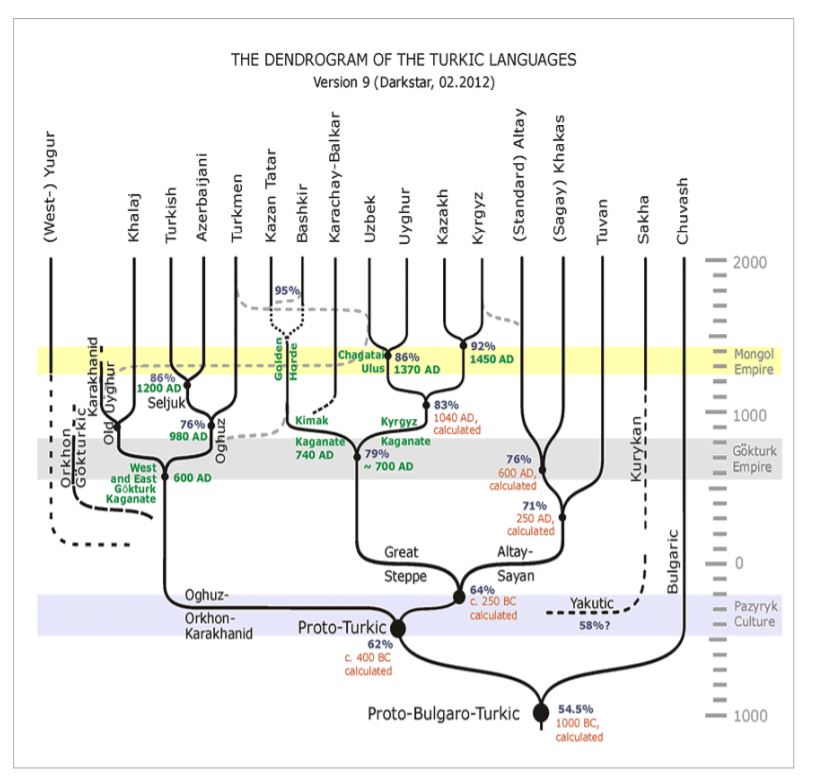
The ancestral Turkic language spoken in modern-day Mongolia and East China around 400 BC evolved to form Turkmen, Azerbaijani, Uzbek, Uyghur, Tatar, Kazakh, Kyrgyz, and other Turkic languages.
This is the most agreed origin of the Turkish Language.
Yet other theories that are not widely accepted propose that older ancestral languages that tie together Uralic and Altaic languages exist.
Let me explain all the theories about language theories about the Turkish language’s origins.
1.1 Turkic Languages Family
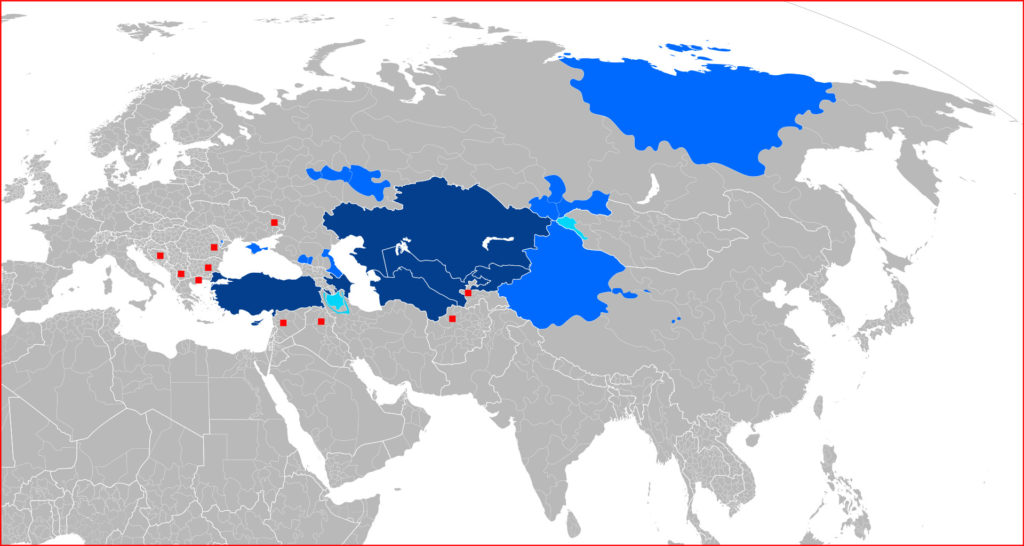
In the map above,
- Dark blue areas are the countries with an official Turkic language.
- Light blue areas are autonomous regions with an official Turkic language.
- The red dots represent countries where a minority population (of at least 50 thousand) speaks a Turkic language.
Only the native population is taken into consideration.
Göktürks (6th to 8th century) and Uyghur Khaganate ( 7th and 8th) were the first Turkic empires that used old Turkish, in other words, proto-Turkic language.
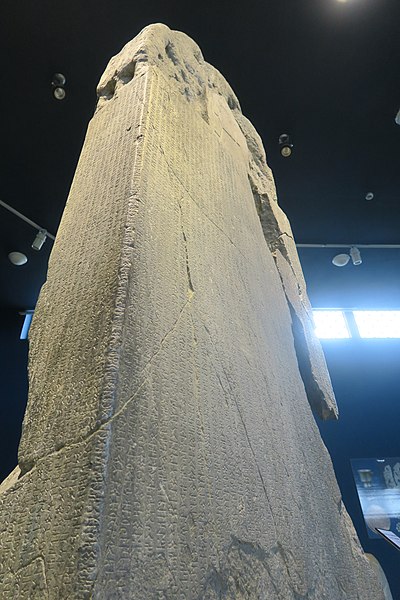

The oldest written documents of Turkic surviving to the modern day are the Orkhun Inscriptions located in the steppes of Mongolia.
The earliest Turkic writings are Orkhon inscriptions written with the Old Turkic alphabet, erected by early Turkics (Gokturk) between 732 and 735 AD.
Today, besides sharing the same grammar structure, all Turkic Languages share some mutual intelligibility.
I read the Orkhon inscriptions’ original text written in the Latin alphabet. I was amazed to read this ancient language and see the similarity with modern-day Turkey Turkish.
The monument tells the Turkish race’s legendary origins, history, the Chinese subjugation of Turkish people, and their liberation from the Chinese nation.
Turkic countries and ancestors of Hungarians accept the Huns as their ancestors who originated from the same place as Turks just a few centuries before the first Turkic Empires.
Although Hungarian is not mutually intelligible with Turkic languages, it is accepted as a Turkic language by Hungarian and Turkic countries.
Hungarians are descendants of the Huns, one of the Turkic Tribes. Hungarian is accepted as a Turkic language by Turkic countries.
Yet, Hungarian is the least similar language to Turkish among Turkic Languages and has no mutual intelligibility.
1.2. Altaic / Transeurasian Language Family Theory
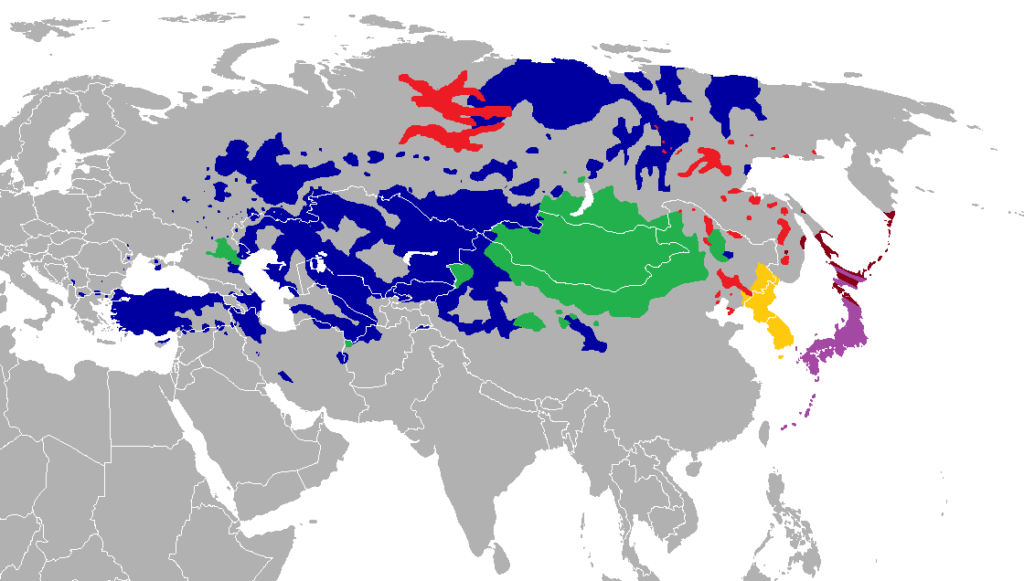
According to Altaic and Transeurasian language theories, Turkic Languages have an older ancestral language that is also the common ancestral language of Japonic, Koreanic, Tungusic, and Mongolic Languages
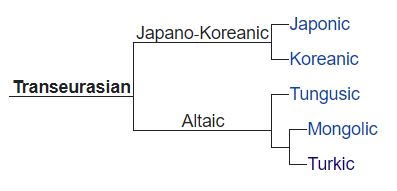
Altaic languages definitely have similar grammatical, logical, and structural features.
Like Turkish, Japanese has agglutination (adding prefixes to verbs), sentence structure (Subject-Object-Verb), and other grammar similarities.
Korean and Turkish also share similar grammatical structures like agglutination, sentence structure, the syntax of adjectives and nouns, and vowel harmony.
Yet, linguistic similarities lie primarily in the grammar structures of these languages.
For this reason, whether these languages share a common ancestry or the similarities result from cultural exchanges between these languages is debatable. source source2
Japanese linguists widely reject Japanese Altaic roots and the Japanese language’s relation to Korean.
1.3. Ural-Altaic Language Family Theory
The Ural Altaic Language family goes even further in time to propose that Uralic and Altaic language families share the same ancestral language and origin.
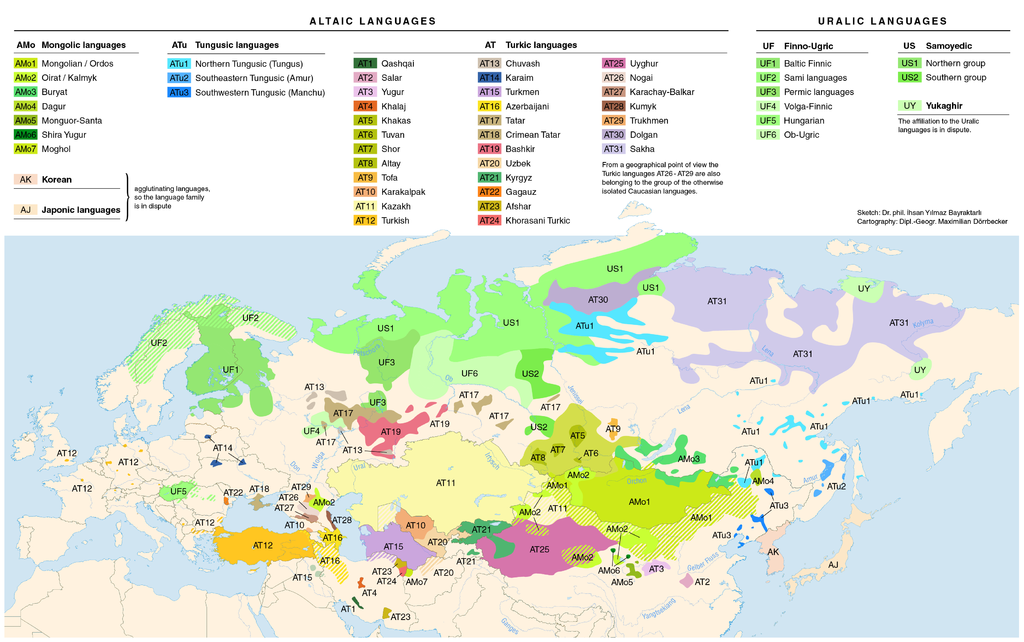
Turkish shares some grammatical features with Uralic Languages (Finnish, Hungarian, and Estonian.)
The Ural Altaic Language Family is the leading theory taught in Turkish schools and is officially recognized by Hungary, Turkey, and other Turkic countries.
Yet, I should mention that this theory is widely criticized among academicians.
2. Ottoman Turkish vs Modern Turkish
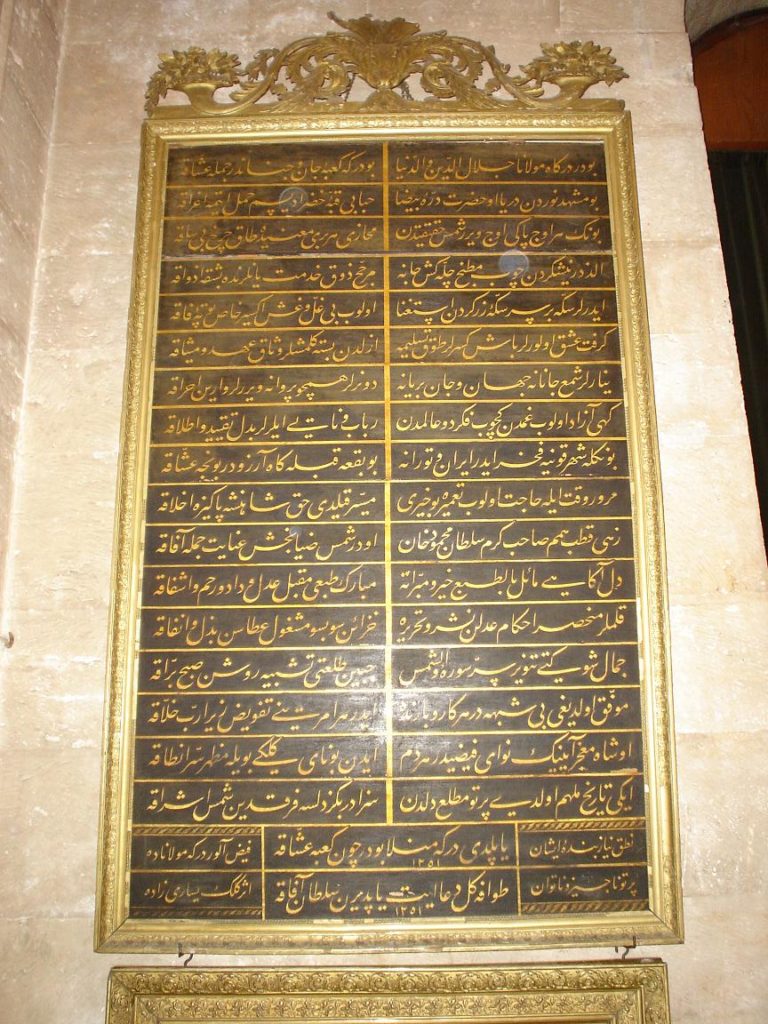
Ottoman Turkish and the wide usage of the Arabic alphabet during the Ottoman Empire (1299–1922) are the main reasons why foreigners are confused about Turkish language origins.
Ottoman Turkish was not the same language spoken by the native Turkish population, it was the Ottoman Empire’s official language.
Ottoman Turkish, used by the empire’s elite, had 80% Arabic and Persian loanwords and was written with the Arabic Alphabet.
For this reason, westerners conducted affairs with the Ottoman Empire and thought Turkish was a form of Middle Eastern language along with Persian and Arabic.
Ottoman Turkish, also called the palace language, was foreign to ordinary Turkish speakers, and Turkish people struggled to understand, read, and speak Ottoman Turkish.
The reform taken by the Turkish Republic around 1920-1930 and acceptance of the Latin alphabet helped the Turkish Language return to its original form and become closer to Turkic languages.
Even today, Ottoman Turkish is not understandable to Turkish speakers and it is an extinct language, only used by scholars in their academic studies.
3. Relation Between Turkish and Turkic Languages
Robert Lindsay prepared the diagram below to demonstrate ancestral common words (cognates) in Turkic languages and their relations.
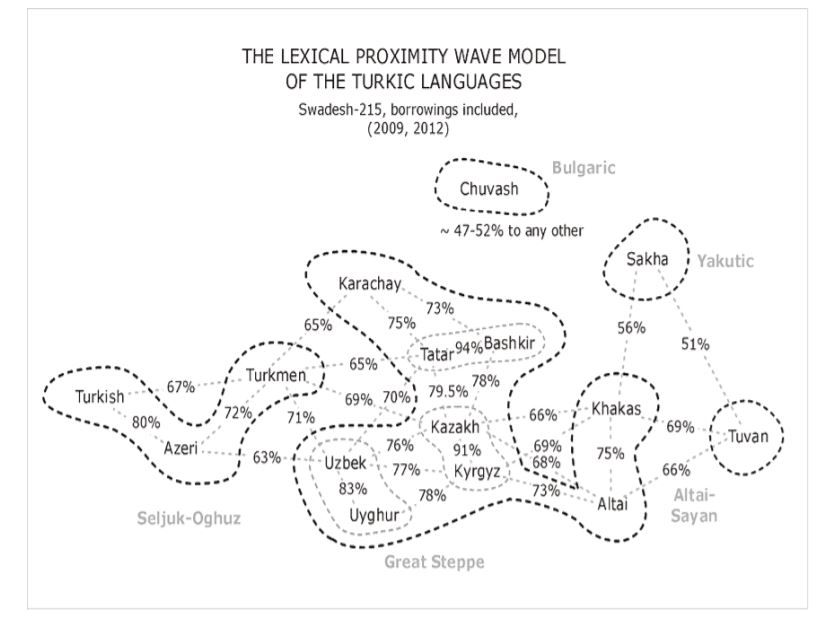
Robert Lindsay also stated there is limited mutual intelligibility between Turkic languages depending on the number of cognates.
According to Lindsay, if two languages are cognates below 60%, there is essentially zero intelligibility.
For this reason, as a Turkish speaker, I should have no chance of understanding Uyghur and Uzbek. Yet, this is not true.
I am not a linguist, but as a native speaker, I disagree with Lindsay.
The Turkish language is about the verbs and not about the words. By adding suffixes to verbs, you can create sentences with one word. For this reason, a cognate study would not reveal much about the mutual intelligibility of Turkic languages.
I am a native Turkish speaker with no language training in any Turkic language. Yet, it is easy for me to open Kazakh news websites and read Kazakh news even though they use slightly different alphabets and sounds.
I may not understand the text thoroughly, but I will have a good idea of what’s happening.
The written form of Turkic languages is much more intelligible, but the spoken language is more challenging to understand because of accent differences.
ALL MY ARTICLES ABOUT TURKISH LANGUAGE – (Click on the title to read)
Origins of the Turkish Language – A Native Speaker Explains
Languages Similar to Turkish – Explained by a Native Speaker
What Languages Do Turkish People Speak?
What Languages are Spoken in Istanbul?
Turkic Language Family – A Turkish Explains
Turkish vs Persian (Farsi) Language: Similarities and Differences

